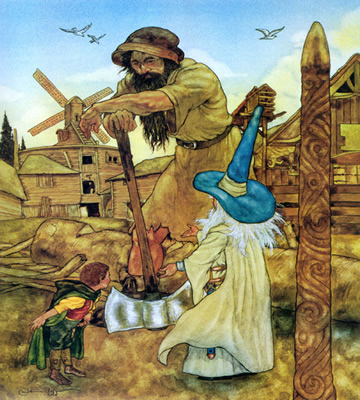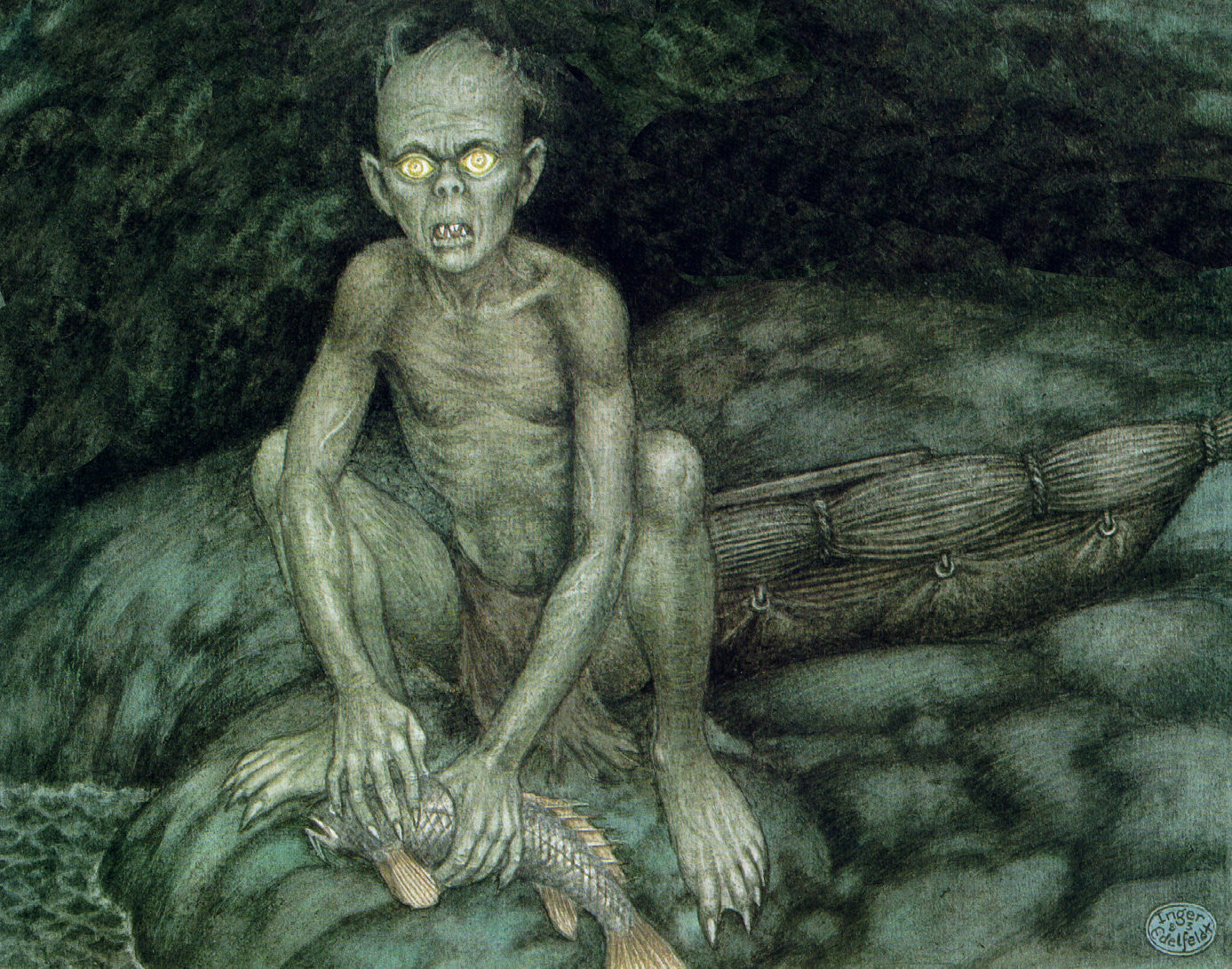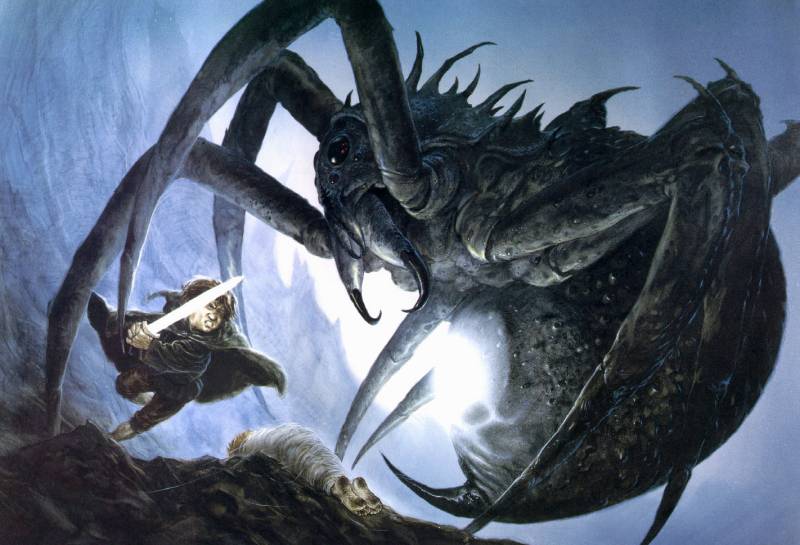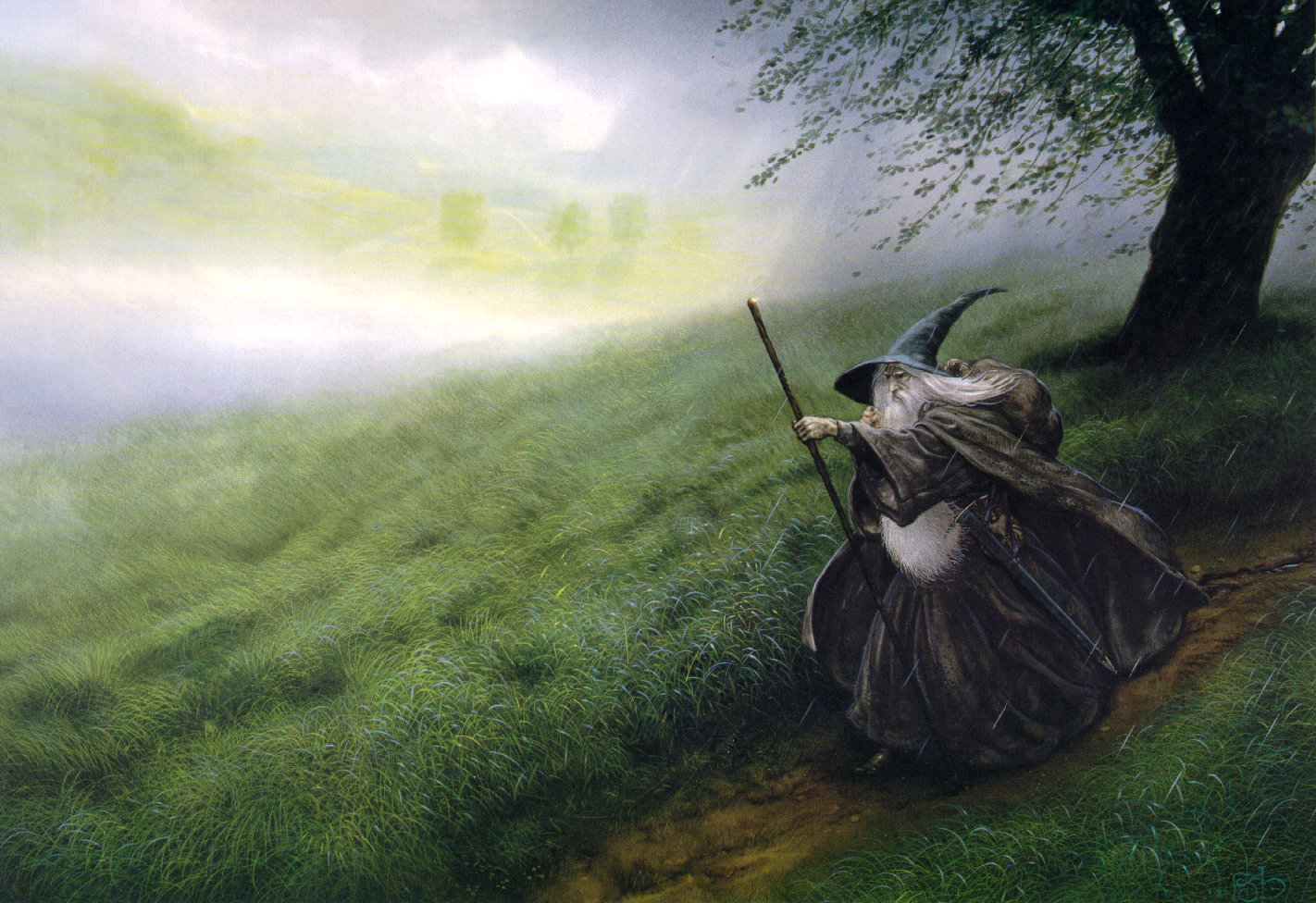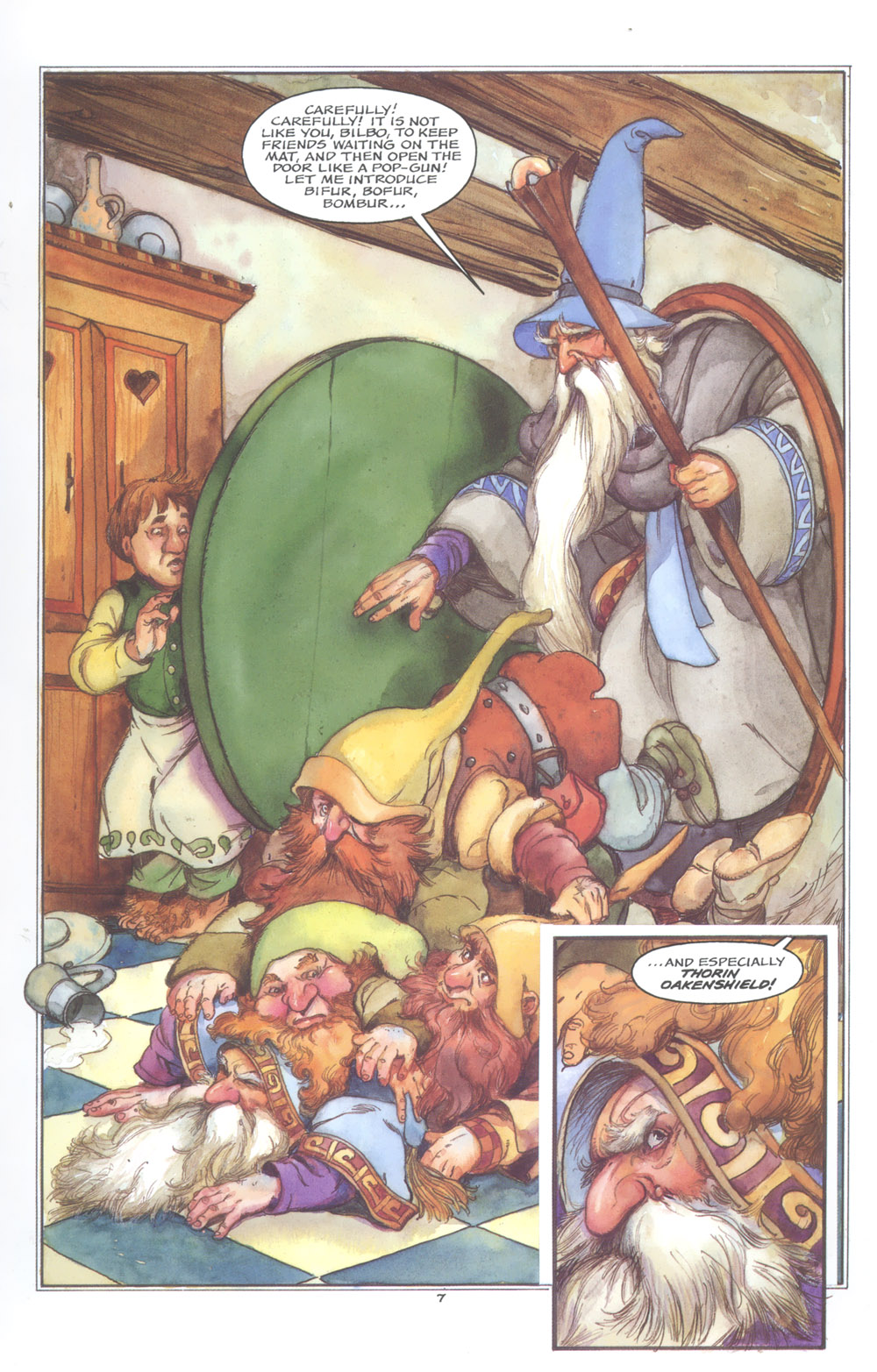The Hobbit was first published in 1937. It was Tolkien’s first published piece of fiction, and remains not only one of the best-selling books of the 20th century, but a minor masterpiece in its own right.
The Hobbit first introduces us to Bilbo Baggins and some of Tolkien’s other most loved characters. It also introduces us to hobbits in general. The word “hobbit” is Tolkien’s own creation, and he admitted later that he had no idea how the name had come about.
As the story goes, he was grading papers during the “summer session” of 1928 when he came across a page which had been left blank. Tolkien was an inveterate doodler on any paper or margin that was available. Many of the earlier stories in his Middle-earth “mythologies” were first recorded this way, and The Hobbit was no exception.
On that blank page, Tolkien wrote the sentence, “In a hole in the ground there lived a hobbit.” This has since become one of the most recognizable sentences in all of English literature.
Tolkien, of course, had no idea what the sentence meant. He had never heard of “hobbits” and hadn’t the foggiest idea what a hobbit was. But as with most of Tolkien’s stories, the idea begins with a word...usually a name.
The Hobbit was written during the early 1930’s, but was not offered to a publisher until 1936. Tolkien wrote the manuscript, apparently read it to his children and a few close acquaintances, and put it on a shelf.
Those of Tolkien’s close friends who were aware of the manuscript, including C.S. Lewis, encouraged Tolkien to submit it to a publisher, but Tolkien refused.
Why? Conjecture based on later comments of Tolkien’s was that he feared it would not be taken seriously. Tolkien understood his standing as a scholar, and perhaps believed that The Hobbit would not be seen as a useful application of his scholarly talents.
Serious scholars, after all, did not write “children’s” tales.
The Hobbit, of course, is both a “children’s tale” and something more. Tolkien drew deeply on his knowledge of ancient mythology, primarily northern (Norse) mythology, to flesh out the characters and plot.
As history has shown, Tolkien was indeed eventually persuaded to submit the manuscript for publication, through the influence of Susan Dagnell, a “friend-of-a-friend” who worked for the small publishing house of George Allen & Unwin.
Sir Stanley Unwin, the chairman of the publishing house, considered himself unable to properly critique a children’s book, and gave it to his 10-year-old son Raynor, who wrote the following review for his father:
Bilbo Baggins was a hobbit who lived in his hobbit-hole and never went for adventures, at last Gandalf the wizard and his dwarves persuaded him to go. He had a very exciting time fighting goblins and wargs. At last they got to the lonely mountain: Smaug, the dragon who guards it is killed and after a terrific battle with the goblins he returned home – rich! This book, with the help of maps, does not need any illustrations. It is good and should appeal to all children between the ages of 5 and 9.
As it happened, the book appealed to a much wider audience than the younger Mr. Unwin believed and has since become a classic, selling more than 40 million copies. It also launched the writing career of one of the 20th century’s greatest and most beloved authors.
Credit: http://www.tolkien-online.com/hobbit.html






